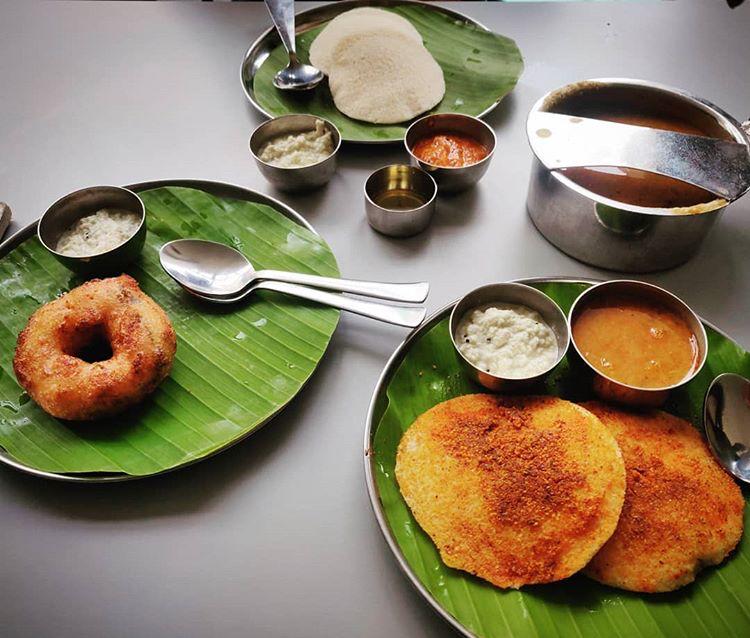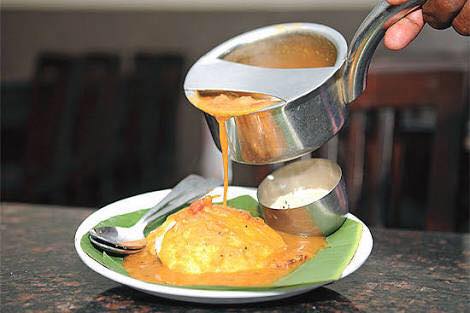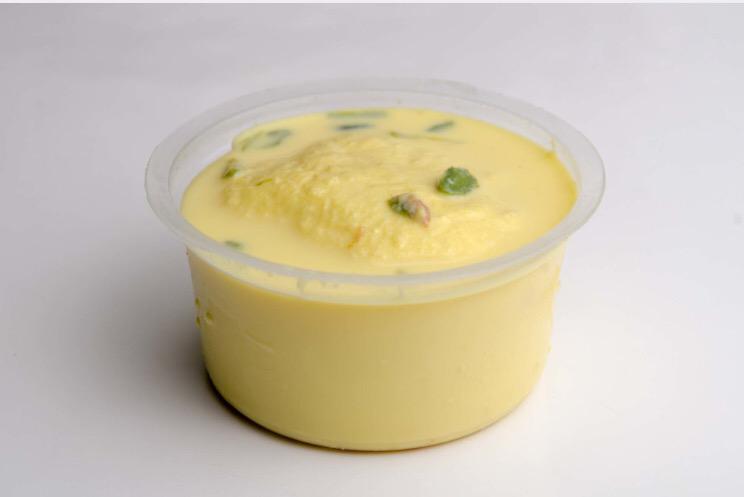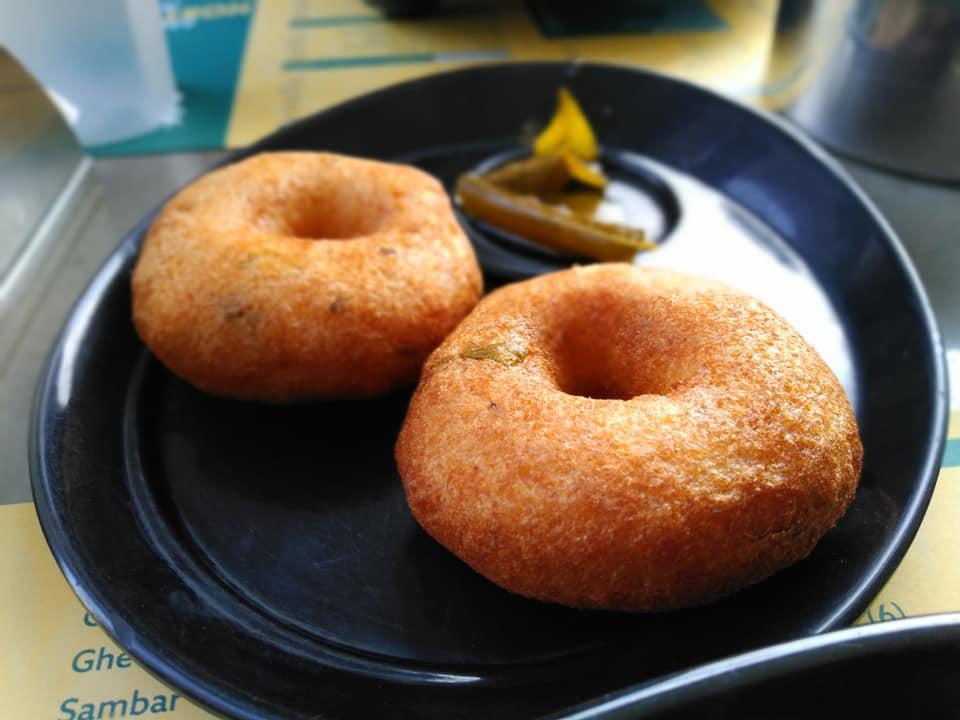While every nook and corner in Chennai serves you the staple idli, dosa, pongal, vadai, sambar and chutney, there is something distinctive about the taste of the sambar that Ratna Café serves. An iconic eatery in Triplicane, it has risen to fame on the back of its delectable sambar that the wait staff carry around in mini-buckets and pour atop hot servings of idli and dosa.
What is even more fascinating to note is that this South Indian staple joint was established by a family from Mathura, Uttar Pradesh, who travelled almost 2000 km to Madras in 1948.

Jaggilal Gupta, the founder of Ratna Café merged his sharp business acumen and his love for good food to create this food landmark of Chennai. The Better India caught up with Lokesh Gupta (30), the fourth-generation scion who is currently at the helm of affairs.
“It’s amazing how we have customers who have eaten here in 1948 who now bring their grandchildren to eat here. The nostalgic value and brand loyalty that Ratna Café enjoys is just unparalleled,” he says.
‘All About Nostalgia’

Lokesh, who is now the fourth generation running Ratna Café, is an architect by qualification who studied architecture in the United Kingdom. He says, “After I completed my course, I came back to Chennai on 26 July 2012 and had an interview lined up on 27 July 2012. Believe me, I never attended that interview and instead went to work with my father and there was really no looking back after that.”
Asked why it took him so long to join the business, he shares, “Honestly, growing up, I never enjoyed or relished South Indian food. Perhaps that was also because I was exposed to so much of it. Even when we had family visiting us, they would insist on eating at the restaurant. While at the back of my mind I knew I would join the business, I wasn’t keen on getting a degree in hotel management ever. That was never a part of my thought process.”
But Ratna Café evokes a very strong sentiment in its customers. Abdul Rahim Basha, a customer who has been a patron for the last 50 years, says that every morning at 6.30 am he is the first to enter the restaurant to get his daily fix of sambar and idli.
“If you have ever ordered a plate of idli at a restaurant, chances are it is accompanied with two-three small bowls containing sambar and two or three types of chutney. Here the sambar is poured over the idli and is unlimited,” Lokesh reiterates.
“We have been trying to maintain the same taste and quality, because that is what people keep coming back for. For years now we have been following the same ratio of onion, tomato, spices and the dal that goes into making the sambar.”

Their true testament to quality is that loyal customers are sure the sambar tastes exactly the same everyday.
“Ratna Café is all about nostalgia and ever so often when I walk around the restaurant I have had people come up and tell me what the food here means to them,” he says. Speaking about one such incident, he shares, “There was an elderly lady who got dropped at the Triplicane outlet in an ambulance. She told me that since she was hospitalised, she was unable to eat from the café and it had been the longest 10 days she had gone without eating here. This shocked and surprised me in equal measure. Her first stop after getting discharged was Ratna Café.”
Where the Sambar is an Institution

“While on an average one might consume three idlis we have customers having close to 700 ml to 1 litre of sambar with their meals. The sambar that we serve is unlimited and what we charge is for the idli and not the sambar,” says Lokesh.
Speaking about the magic of the sambar made here, Lokesh says, “Every ingredient that goes into making the sambar is sourced with utmost care. “Despite tasting the sambar every day before it leaves the kitchen, given that I am a fourth-generation restaurateur, my understanding of the sambar comes from what I hear from my customers. To maintain that quality and taste is a huge challenge and adds immense pressure on me,” he says. He goes on to say that his only reference point is yesterday, and his endeavour is to keep that consistent.
Having said this, he adds, “My customers can in fact look at the sambar and tell if it seems off. I have had people tell me that it isn’t up to the mark just by smelling it and checking its colour. I have no plans of modernising the method that has been followed thus far. The only change I brought about was to move away from cooking on firewood to using steam.” These are changes made only to ensure that hygiene standards are maintained.
On an average, there is close to 1,500 litres of sambar that is made at this iconic eatery, and Lokesh says that there have been days when that number reaches 2,000 litres. A plate of idli is charged at Rs 60 and this comes with unlimited sambar and chutney on demand. A meal for a family of four will cost you about Rs 500 even today. While the bestselling item is sambar-idli, their filter coffee and vada come a close second and third.
Many Other Firsts to its Name

In 1948, when Ratna Café was established, it has just about10 items on the menu and Lokesh says, “Rava kesari, tomato bhath, sambar-idli, dosa, masala dosa, basundi and rasmalai were the items that one could order. In fact, while we are known for the sambar we serve, there were a few more items that we popularised like basundi, rasmalai and the rose and badam milk. It caught on so well that every other South Indian restaurant in the state started serving these. That is the true legacy that Ratna Café has created.”
From 1948 till today, the restaurant has managed to cultivate a loyal legion of patrons. There is often no space to even park your vehicle outside the café and yet, one almost always has to wait to be seated and served.
Lokesh joined the business when they were undergoing a sea change. He says, “We had started catering to various big corporations and that, in my opinion, was something that was difficult to manage at that time. I did feel that having a plan in place and direction was needed to stay relevant. Back when it was started, all it was running on was passion. While that was important, we needed to look beyond.”
Currently present in four locations within Chennai, Ratna Café’s central kitchen continues to be in Triplicane where the sambar and all the batter is made.

As a young restaurateur Lokesh has many dreams for Ratna Café and in conclusion he says, “To take the magic of the sambar to other parts of the country is certainly on my mind. Having said that, it is not easy – we have to ensure that we do not dilute what has painstakingly been created. We cannot afford to have the food taste differently across the outlets.”
He adds, “I am looking at Ratna Café being around for another three generations at least, so why hurry.”
So the next time you visit Chennai, do eat at Ratna Café. Be sure to look for the place where its patrons are drinking sambar like one would drink tea out of a saucer — that’s how you’ll know you are at the right place.
(Edited by Yoshita Rao)
No comments:
Post a Comment